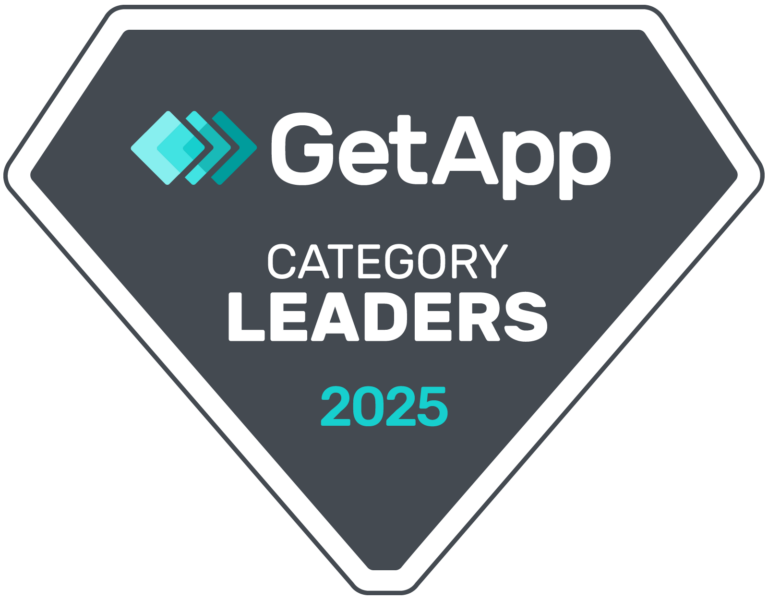In today’s enterprise environment, where the average company utilizes 473 software applications, integrating a digital adoption platform (DAP) is critical. These platforms, like AppLearn, ensure employees use these tools effectively and feel empowered to achieve their goals. 70% of surveyed enterprises agree that implementing a DAP significantly increases technology adoption and, as a result, the return on investment (ROI).
AppLearn, a well-known DAP, offers organizations a user-friendly, no-code editor for creating in-app guidance and contextual support.
This end-user support includes interactive walkthroughs, tooltips, field validations, and self-help resource centers—all designed to provide immediate solutions. Such tools are crucial for quickly onboarding end-users to proficiency, offering moment-of-need performance support, and guiding them through contextual processes.
DAPs like AppLearn are crucial in addressing low software adoption rates, with 50% of enterprises reporting rates below 90%. They provide employees with superior application training and contextual workflow support, making choosing the suitable DAP particularly important.
With 84 DAPs listed on G2, the selection process can be overwhelming. Our comparison guide focuses on AppLearn, breaking down its features and pricing and comparing them with other top digital adoption platforms.
This comprehensive guide, complete with a feature comparison table, offers valuable insights to help you choose the DAP that best fits your business needs, answering key questions and highlighting how AppLearn stacks up against its competitors.
What are the best DAP alternatives to AppLearn?
What Is AppLearn?
AppLearn is a digital adoption platform (DAP) that provides in-app assistance to guide users and help them learn new technology. The platform includes analytics and feedback features to track user progress, identify areas where people get stuck, and make necessary adjustments based on survey responses.
In January 2024, Nexthink acquired AppLearn, aiming to integrate these capabilities into its comprehensive digital employee experience solutions, enhancing both platform offerings and user experience.
AppLearn’s core solution areas include:
- In-app support and guidance: AppLearn offers personalized, context-sensitive support within applications to aid users in completing tasks and improving productivity.
- Adopt analytics: This feature provides comprehensive data and insights across all applications and tasks, enabling better decision-making and strategic alignment.
- Consultation and support services: AppLearn provides expert services for deploying and managing their digital adoption platform, ensuring optimal performance and ROI.
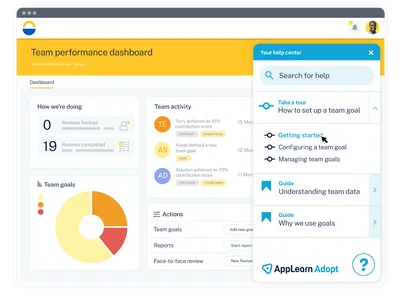
AppLearn’s Features
AppLearn is designed to improve enterprise software adoption through training, in-app communication, and usage analytics. Its features are geared towards employee training rather than customer product adoption.
AppLearn’s core DAP features include:
- Trails: Trails are interactive tutorials designed to guide users through various features of an application. These walkthroughs provide a detailed checklist of the steps the user will take to learn the feature, along with comprehensive guidance and instructions for each step in the process.
- Training Pages: Training Pages is a collection of searchable training content. With AppLearn, you can create various types of content and grant access to users or teams to avoid overwhelming users with irrelevant information. The Split Screen feature displays relevant training content within the app according to the user’s role.
- Smart Pages: This is a pop-up messaging and alert feature for communicating with users. You can embed videos, images, or links to other content in the pop-up.
- Core Analytics: With Core Analytics, you can keep track of user behavior and engagement with content to identify any potential learning gaps or adoption problems. You can view all the analytics data on a central dashboard. AppLearn also provides advanced analytics that offer third-party integrations, enabling you to set and track project OKRs.
- Feedback collection: AppLearn enables you to send in-app surveys, allowing you to create user segments and tailor surveys to employees’ roles and app usage.
AppLearn’s features work across mobile, tablet, desktop, and browser-based applications.
AppLearn’s Pricing
AppLearn doesn’t provide any pricing information on its website. Instead, it offers links to get a customer quote or speak to an AppLearn expert directly.
The features offered by AppLearn are referred to as “modules.” The platform is highly adaptable and can be customized to suit your particular requirements. Instead of providing predefined pricing plans with fixed features, the price is tailored to each client’s needs.
6 Reasons to Consider an AppLearn Competitor
When considering a new DAP, it’s essential to explore your options. While AppLearn offers robust digital adoption solutions, some alternatives may better align with your organization’s needs or limitations.
Here are six limitations of AppLearn and reasons why you should consider an alternative DAP vendor.
1. Limited functionalities with new releases and updates
AppLearn’s limitations in managing new releases and updates are highlighted by customer feedback, emphasizing issues with limited functionalities. This problem, where features might be temporarily unavailable or underperform post-update, can disrupt user workflows and affect the overall experience. This underscores the importance of rigorous testing and quality assurance to ensure smooth transitions and integration of new features, maintaining user trust and satisfaction.
In contrast, Whatfix focuses on seamless integration and consistent performance with its updates and new feature rollouts. This approach guarantees uninterrupted access to platform functionalities, smoothly blending new additions without disrupting existing workflows. Whatfix’s dedication to a reliable user experience makes it a strong contender for organizations prioritizing stability and dependability in digital adoption platforms, especially beneficial for enterprises needing a flexible and robust learning environment.
2. File type restrictions
AppLearn’s users have pointed out a need for broader file type support, particularly noting the lack of Excel file compatibility. This is a notable limitation, as Excel’s interactive features are often crucial for training materials. Enhancing the range of supported file types would significantly improve AppLearn’s functionality, catering to a variety of digital tools and document needs in user workflows.
Whatfix addresses this gap by supporting a broader spectrum of file types, including Excel. This feature is essential for businesses dependent on multiple document formats. Whatfix’s adaptability in handling diverse file types boosts its utility and aligns seamlessly with users’ existing workflows, positioning it as a comprehensive solution for digital adoption challenges.
3. Restricted customization options
The limited customization options in AppLearn’s platform may not adequately meet the specific needs and branding requirements of different organizations. This can impact the user experience and limit the platform’s effectiveness in aligning with an organization’s unique workflows and aesthetics. Customization is essential in ensuring that digital adoption tools resonate well with users and integrate seamlessly into an organization’s culture.
Whatfix addresses this by offering a high level of customization for its in-app guidance and user interfaces. This allows organizations to tailor their digital adoption tools to their specific needs and branding, enhancing user engagement and adoption. Whatfix’s customization capabilities ensure that digital adoption strategies are not only effective, but also align closely with an organization’s unique identity and user experience requirements.
4. Lack of AI capabilities
Currently AppLearn has no mention of AI in its platform or product roadmap. Alternative DAPs like Whatfix are already empowering customers with its AI-powered DAP, which provides content creators and DAP admins with AI text-editing support for auto-translation, tone change, elaboration, copy editing, summarization, and more.
Whatfix is also launching its AI-powred “AI Assistant” that embeds a ChatGPT-style AI chatbot into your end-users UI, allowing them not only to ask it for contextual support and assistance, but also will allow end-users to prompt it to complete tasks inside the application, empowering a whole new way of human-software interaction.
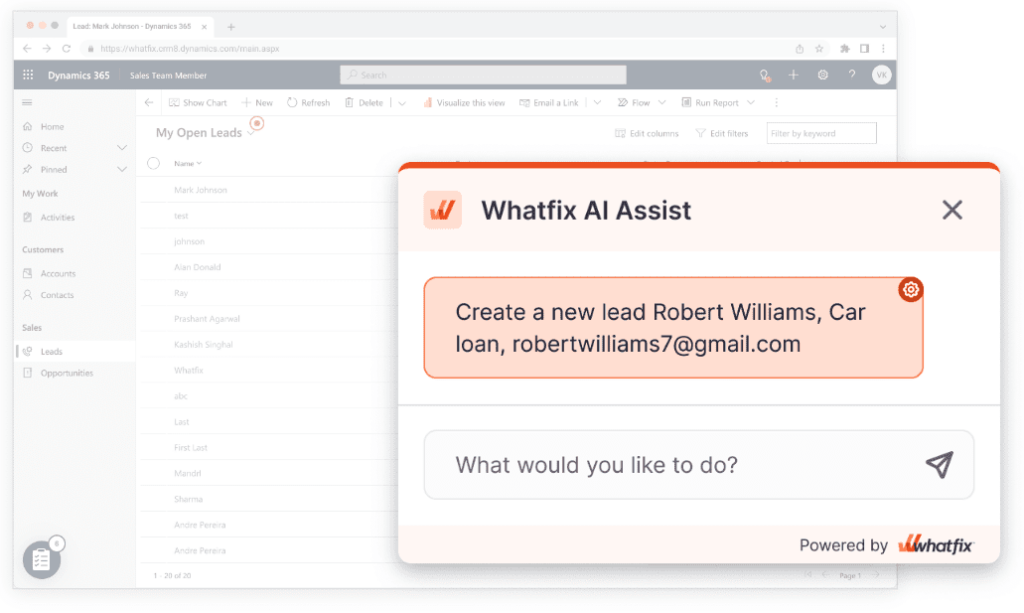
5. It has limited customer enablement and learning resources
AppLearn offers powerful DAP features, but it fails to enable its customers with additional digital adoption resources and community spaces to improve their DAP programs and learn from other digital adoption professionals.
Whatfix has heavily invested in these customer value add-ons, offering a variety of additional learning opportunities including:
- Digital Adoption Center of Excellence: The Whatfix COE enables customers with everything they need to create a digital adoption program that drives business outcomes. It includes resources and professional services on software governance, admin training, end-user adoption, co-innovation, partnership opportunities, and more.
- Digital Adoption Blog: The leading digital adoption blog is an educational space,with over 600 learning articles with 400,000+ professionals learning with us each month. It covers a a variety of topics, ranging from employee and customer experiences like change management, digital adoption, digital transformation, product-led growth, employee training and upskilling, and more.
- Digital Adoption Customer Club: Our customer club enables customers to share their stories, provides opportunities to sign up for upcoming webinars, earn Whatfix swag, and more.
- Digital Adoption Community: A closed community center that brings together our customers to learn from one another and share best practices.
6. It doesn’t support desktop applications
AppLearn only supports web-based SaaS implementations in Chrome and Firefox browsers, which makes it incompatible with desktop applications. As a result, it may not be suitable for enterprises operating in more secure sectors such as healthcare, law, and pharma.
Whatfix offers a team of professional services that can integrate our platform with any desktop application, making it one of the few DAPs to do so.
Whatfix provides full support for all types of applications, including web-based, desktop-based, and mobile applications. It ensures easy integration across your entire technology stack, guaranteeing end-users a consistent, guided experience. It also supports cross-application flows between web and desktop applications, offering a seamless end-to-end guided experience that transitions across multi-application processes and workflows.
7. Poor element detection technology
AppLearn has some limitations in capturing unique attributes of UI elements in applications. This makes it difficult to detect and adjust to changes in element locations when building and maintaining in-app guidance and support. As a result, content creators face more complex processes that require specific configurations at the application level, including using CSS selectors and more technical knowledge. This limits the potential of a DAP and its core value proposition of empowering non-technical team members.
Whatfix has industry-leading element detection technology that excels in automatically updating guided experiences, even when elements change locations. This eliminates the need for CSS selectors or technical knowledge, streamlining the entire content creation process for DAP admins and content creators.
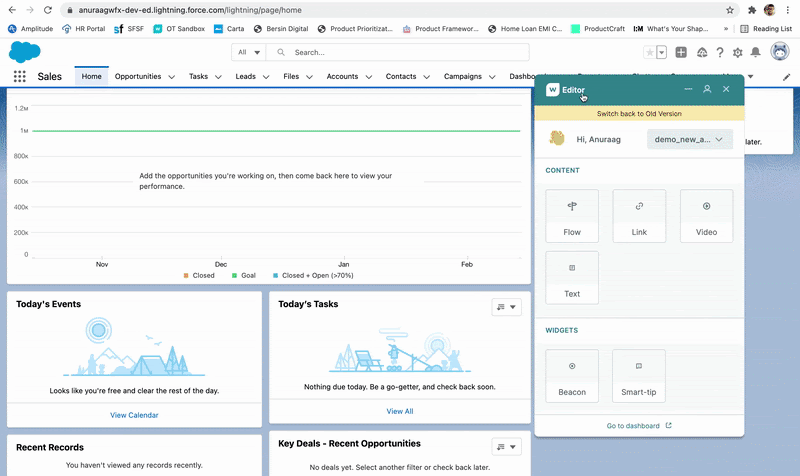
8. It’s not SCORM compliant
The current version of AppLearn lacks SCORM and xAPI compliance, which makes it difficult to track learning activities and integrate them as graded courses in corporate learning management systems (LMS). Additionally, AppLearn has limitations in content exports and contextualization, affecting its ability to display content based on the user’s workflow.
Whatfix is the only SCORM-compliant DAP, allowing organizations to upload in-app flows and walkthroughs to their LMS easily and quickly, creating more interactive and hands-on learning experiences and courses.
Whatfix is SCORM and xAPI compliant, allowing in-depth tracking of learning activities and seamless integration with LMS as graded courses. It supports a broader range of content formats, such as PDFs, slideshows, and videos with voiceovers in multiple languages. Whatfix excels in contextualization, allowing organizations to provide contextualized support to users within their workflow directly in applications.
5 Best Alternatives to AppLearn
To help you make a fully informed decision about the right tool for your business, we compared five top AppLearn competitors. You can quickly see differentiating features and use the cross-company comparison table to find the product with the most relevant features for your team.
1. Whatfix
- G2 Review Rating: 4.7 out of 5 stars, across 306+ reviews
- Price: N/A – contact for a custom quote
Whatfix is a digital adoption platform that has been named a Leader in G2’s Digital Adoption Platform category for nine straight report cycles (that’s five years!)
Whatfix empowers end-users to use internal employee-facing applications and customer-facing applications with contextual in-app guidance and moment-of-need support, resulting in better business outcomes and frictionless software experiences. With Whatfix’s Visual Editor, you can create on-brand in-app elements such as Tours, Task Lists, multi-branched Flows, Self Help, Field Validations, Smart Tips, Surveys, and more.
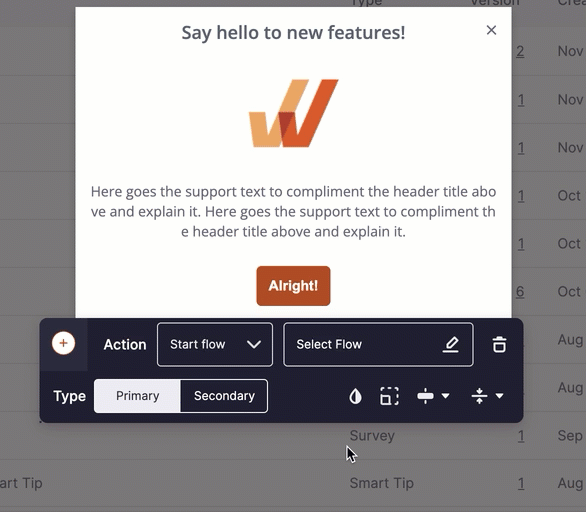
Whatfix’s product analytics suite enables you to analyze your end-user experiences, providing data-driven in-app experiences and end-user support moments. You can use these end-user analytics to identify areas of friction and engage specific user cohorts with contextual, moment-of-need support to overcome these dropoff areas.
With Whatfix Enterprise Insights, you can monitor your software stack to understand SaaS waste and shadow IT. This helps you cut costs and maximize ROI from your digital investments.
Key features that differentiate Whatfix from AppLearn:
- Compatible with a wide range of SaaS platforms, including desktop, web, and mobile applications.
- Tools for creating customizable content.
- An extensive, easily searchable self-help knowledge base embedded within.
- Features for automatic translation, repurposing content, and maintaining existing material.
- Advanced analytics for both product and user behavior, featuring intuitive, no-code event tracking.
- Compliance with SCORM standards.
- Integration of AI-driven features, both existing and in development stages.
- A range of added customer value services, including a Center of Excellence and a dedicated Customer Club.
2. WalkMe
- G2 Review Rating: 4.5 out of 5 stars, across 355 reviews
- Price: N/A – contact for quote
WalkMe is a major player in the digital adoption platform market. The main focus of WalkMe is on employee-oriented applications that are crucial to the success of a business, like CRMs, ERPs, and HCMs. IT leaders can use WalkMe’s tools to provide in-app guidance and support that helps employees use enterprise applications more effectively. This is achieved through moment-of-need support and contextual guidance.
WalkMe mainly targets large businesses, but it’s known to be one of the most challenging DAPs to set up. Users have noted via reviews that It has a steep learning curve and a complex interface.
3. UserIQ
- G2 Review Rating: 4.4 out of 5 stars, across 177 reviews
- Price: N/A
AppLearn and UserIQ offer training and engagement features like guided tours, pop-up announcements, and in-app surveys. UserIQ is more focused on customer success rather than employee training. It has features that increase customer engagement, such as product tours and direct in-app messaging. UserIQ also has more analytics capabilities. AppLearn, on the other hand, has a better selection of training and guidance features.
4. SAP Enable Now
- G2 Review Rating: 4.5 out of 5 stars, across 4 reviews
- Price: N/A – contact for a custom quote
SAP Enable Now is a training and content management platform. Like AppLearn, it enables you to create step-by-step walkthroughs and other training content that users can access from within the application. Both tools work across multiple types of applications, including mobile, web-based, and desktop.
5. Pendo
- G2 Review Rating: 4.4 out of 5 stars, across 1,384 reviews
- Price: N/A, but public reviews say lower-tier prices start at around $12,000~ a year.
Pendo is a DAP that competes with AppLearn in helping companies tackle their external, customer-facing adoption challenges. Specifically, Pendo allows product managers to create in-app experiences such as product tours, checklists for new users, pop-ups, and other in-app messages and guidance to help users achieve their “aha!” moment and drive product adoption.
This helps to reduce customer churn and create frictionless experiences. Pendo also provides powerful event-tracking and end-user analytic features that enable companies to analyze, capture, and learn from their users’ behavior.
Why Whatfix Is the Best Userlane Alternative
All of the before Userlane alternatives can be used to create basic in-app guidance and support on SaaS applications, but as your use case becomes more refined, Userlane may not be the best fit for your needs – or even be technically compatible with them.
Whatfix stands out as the best overall DAP because of its ease of use, variety of features, versatility, customer value add-ons, AI-powered roadmap, and customizability. Whatfix disrupts how end-users consume content, maximizing your ROI and employee productivity by enabling end-users with contextual experiences that create frictionless digital experiences that help them drive business outcomes.
- 37% increase in user productivity
- 60% reduction in training costs
- 60% reduction in support requests
- 50% reduction in time to launch new applications




